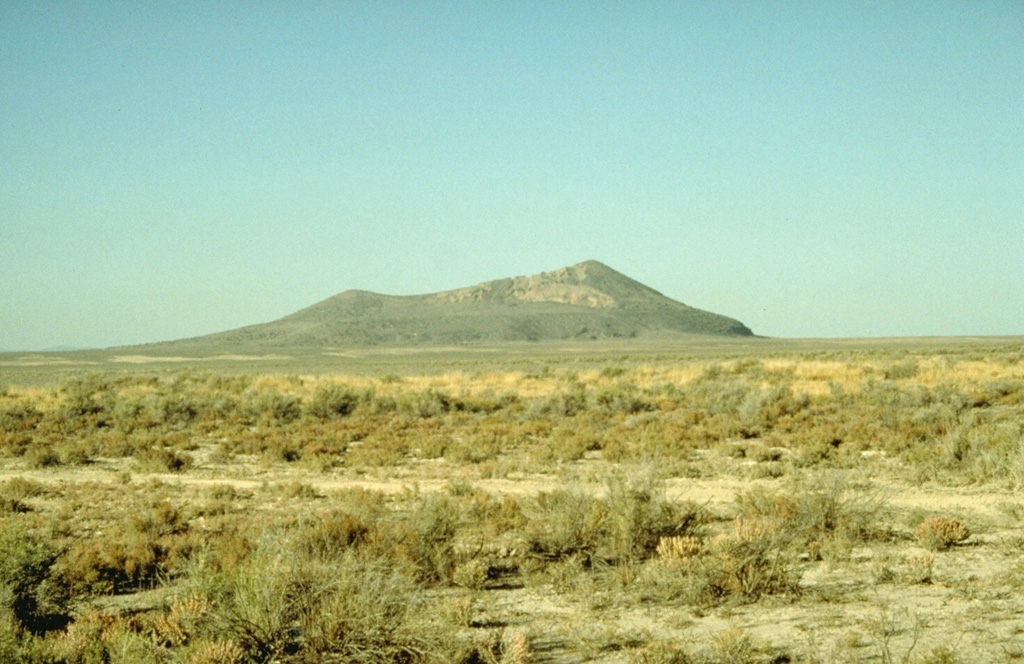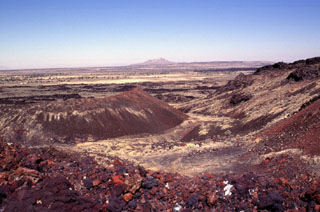Image GVP-03376

Pavant Butte, a large tuff cone in the Black Rock Desert volcanic field, was constructed on top of pahoehoe and aa lava flows about 16,000 years ago. Pavant Butte owes its morphology to the fact that it was erupted through a water depth of 85 m in Pleistocene Lake Bonneville. A prominent wave-cut shoreline is visible on the flanks of the cone. The subaerial portion of the 275-m-high cone consists of palagonite, formed by alteration of volcanic glass. The Pavant field is the northernmost in the Black Rock Desert.
Photo by Willie Scott, 1991 (U.S. Geological Survey).
![]() This image is made available as a Public Domain Work, but proper attribution is appreciated.
This image is made available as a Public Domain Work, but proper attribution is appreciated.

Black Rock Desert
